Video of the Week:
Dividing Iris
Flowers:
Dividing Iris
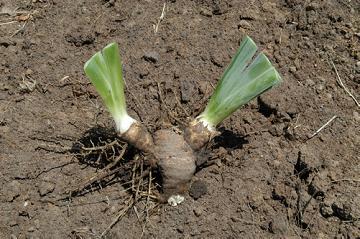
Iris may be divided from late July through August, but late July through early August is ideal. Because iris clumps are fairly shallow, it is easy to dig up the entire clump. The root system of the plant consists of thick rhizomes and smaller feeder roots. Use a sharp knife to cut the rhizomes apart so each division consists of a fan of leaves and a section of rhizome. The best divisions are made from a double fan that consists of two small rhizomes attached to a larger one, which forms a Y-shaped division. Each of these small rhizomes has a fan of leaves. The rhizomes that do not split produce single fans. The double fans are preferred because they produce more flowers the first year after planting. Single fans take a year to build up strength.
Rhizomes that show signs of damage due to iris borers or soft rot may be discarded, but you may want to physically remove borers from rhizomes and replant if the damage is not severe. It is possible to treat mild cases of soft rot by scraping out the affected tissue, allowing it to dry in the sun and dipping it in a 10 percent solution of household bleach. Make the bleach solution by mixing one-part bleach with nine parts water. Rinse the treated rhizomes with water and allow them to dry before replanting.
Cut the leaves back by two-thirds before replanting. Prepare the soil by removing weeds and fertilizing. Fertilize according to soil test recommendations or by applying a complete fertilizer, such as a 10-10-10, at the rate of 1 pound per 100 square feet. Mix the fertilizer into the soil to a depth of 6 inches. Be wary of using a complete fertilizer in areas that have been fertilized heavily in the past. A growing number of soil tests show phosphorus levels that are quite high. In such cases, use a fertilizer that has a much higher first number (nitrogen) than second (phosphorus). (Ward Upham)
Ornamentals:
To Ditch Dig or Not Ditch Dig?
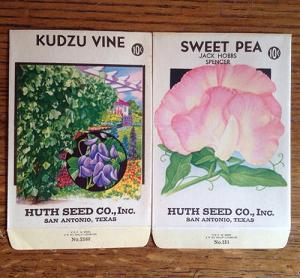
First of all, moving a plant from its native place at the height of its season of interest is most often a fatal move. If the season of interest is anytime other than winter (when plants are dormant) then it is likely when the plant is actively growing. You probably notice plants on the side of the road most often when they are in bloom, which takes a great amount of energy (it is reproductive activity, after all). If the plant is actively growing and flowering, then it needs access to as many resources as it can get—all of the roots to gather water, nutrients and leaves to photosynthesize and make food. Cutting off one of those resources (primarily roots when you dig it up) puts the plant under great stress. It needs a lot of water. If you plant it immediately, it MIGHT survive. It is unlikely to thrive right away if it does survive. More often, the process will kill the plant and your efforts will have been for naught. How disappointing.
There’s a bigger problem with ditch digging that has nothing to do with plant survival. Quite the opposite actually. Ever heard of kudzu, “The Plant That Ate the South?” Kudzu is a climbing vine that traverses anything in its path, including other trees and shrubs, which it shades out and kills. It was first introduced to the U.S. as an ornamental shrub, “an effortless and efficient shade producer” in 1876. Later (in the 30s and 40s), it was rebranded as a remedy for soil erosion and farmers were paid $8 an hour to sow it into more than one million acres of topsoil. Oh my.
Not all invasive species are introduced like kudzu was, but most are as challenging to get rid of as kudzu continues to be. What are invasive plants? These are nonnative, introduced species which have a tendency to spread and are believed to cause damage to the environment, the economy and/or human health. Please note the entire definition —tendency to spread and cause damage. We have a great many introduced ornamental plant species that grow and perform exceptionally well in our climate without also becoming invasive. Indeed, if it were not for plant hunters exploring the world, we would not have nearly the amount of diversity in our landscapes as we do today. Nor is a native-only landscape the only way to garden. It is a way to garden. Introduced species are not necessarily evil. But I digress, perhaps that is a discussion for another article.
The key here is to know what is considered invasive in our part of the world. This information can generally be found by searching for your state name and “invasive species.” The USDA manages lists from a national level and there are often statewide “council” organizations that provide educational material for free. For instance, the Kansas Forest Service (www.kansasforests.org) and the Kansas Native Plant Society (www.kansasnativeplantsociety.org) publish lists of plants considered the worst invasive species in the state. A highlight from this list is Amur honeysuckle (Lonicera maackii), which is quite eye catching both the spring (yellow/white flowers) and in the fall with its abundant bright red berries. But don’t move it to your house. Wisdom, environ-mental concern and the law should prevail in this situation. It is against federal and state laws to grow or move (intentionally or unintentionally) species considered invasive (www.invasivespeciesinfo.gov/laws/publiclaws.shtml). I can’t calculate the likelihood of “plant police” pursuing you, but now you know better and can do your part to preserve our native lands.
It’s worth noting that not every plant is invasive in every state. For example, butterflybush (Buddleja) is a beautiful, free-flowering woody perennial that is available in just about any size and color you desire. They are excellent choices in the Great Plains. However, in Oregon they are considered invasive and are illegal for nurseries to grow and sell. Traditional species, that is. Because of their free-flowering (and free-seeding), many breeders have worked to develop sterile cultivars (producing 2% or less of viable seed) that can be grown and sold in regions where butterflybush is considered invasive. We benefit from these innovations with new colors, sizes and growth habits. Recent introductions you might be familiar with include the dwarf varieties Low and Behold® ‘Blue Chip’, ‘Blue Chip Jr.’, ‘Ice Chip’, ‘Lilac Chip’ and ‘Pink Micro Chip’. There are also some delicious-sounding cultivars in the Fluttterby Grandé™ series: ‘Blubberry Cobbler Nectar Bush’, ‘Peach Cobbler Nectar Bush’, ‘Sweet Marmalade Nectar Bush’, ‘Tangerine Dream Nectar Bush’ and ‘Vanilla Nectar Bush’. Boy, those marketers sure do know how to make our mouths water for new plants. Since we’re not in Oregon, you don’t need to know the full list of approved butterflybush cultivars. However, the invasive plant discussion is a passionate and nuanced one, which involves many puzzle pieces. In the end, it’s most important to “Know Before You Grow.” And that, my friends, is all anyone can ask. (Cheryl Boyer)
Pests:
Flatid Planthoppers
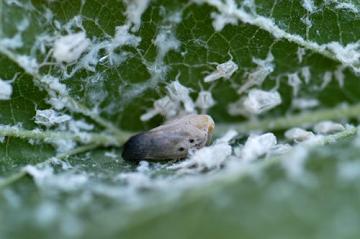
Plant injury due to these insects is usually minor. Feeding by large populations may cause death of seedlings or wilting of small twigs of larger plants. Control is usually not recommended because natural enemies often keep flatid planthoppers in check. If control is warranted, a strong stream of water from a hose should knock them off or a number of insecticides may be used including malathion, permethrin, cyfluthrin, and bifenthrin. For a detailed description, check out the University of Georgia Bugwood page at http://wiki.bugwood.org/Archive:Ash/Flatid_Planthoppers (Ward Upham)
Spider Mites on Tomatoes
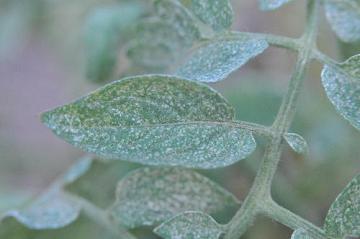
Look for stippling on the upper surface of the leaves as well as some fine webbing on the underside of the leaves. These tiny arthropods (they are not true insects) are often difficult to see due to their size and their habit of feeding on the underside of leaves. If mites are suspected, hold a sheet of white paper beneath a leaf and tap the leaf. Mites will be dislodged and can be seen as tiny specks on the paper that move about.
Spider mite control can be challenging. A strong jet of water can be used to remove the mites but may not be as easy as it sounds. A high-pressure directed spray is needed to dislodge the mites. Since spider mites feed on the underside of the leaves, the spray is most effective if it comes from below. This can be difficult to accomplish with a thumb over the end of the hose. Some gardeners use a water wand hooked to a shut-off valve. The water breaker is then replaced by a brass nozzle.
Horticultural oils and insecticidal soaps (Safers, for example) can also be helpful. Spray early in the morning when temperatures are cooler and plants have rehydrated. Resprays will likely be needed. (Ward Upham)
Squash Bug Control
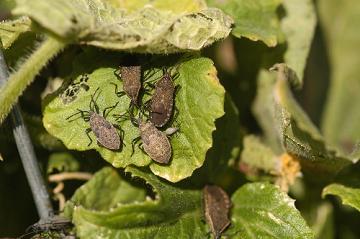
(Ward Upham)
Fruit:
When to Pick Peaches
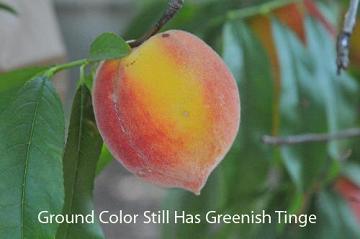
Peaches that are mature enough to pick are still hard. They do not give when lightly squeezed. However, these peaches will ripen off the tree and will have very good quality. They may not be quite as sweet as a tree-ripened peach but are still very good. So what do we look for to tell if a peach is mature enough to harvest? Let’s look at a couple of factors.
Color: The reddish coloration is not a good indicator. Look instead for what is called the “ground color.” This is the part of the peach that does not turn red; for example around the stem. The ground color of the peach will lose its greenish tinge and turn yellow when the peach is mature enough to harvest. I use this characteristic more to determine when NOT to pick a peach. If there is any green in the ground color, it is too early. If the ground color is yellow, then I move to the next characteristic.
Ease of Removal: A mature peach will separate easily from the branch if the peach is lifted and twisted. If it doesn’t, it is not mature enough to pick yet.
All peaches will not be ready to pick at the same time. Pick only those that are ready and come back later for more. It often takes 3 to 5 pickings to harvest a peach tree.
Peaches that are picked early but will be used for fresh eating should be allowed to ripen inside at room temperature. Once they are ripe, they can be refrigerated to preserve them for enjoyment over a longer period of time. (Ward Upham)
Miscellaneous:
Robin Ruether Awareded "Top 40 Under 40" Award
Contributors: Cheryl Boyer, Nursery Crops Specialist; Ward Upham, Extension Associate
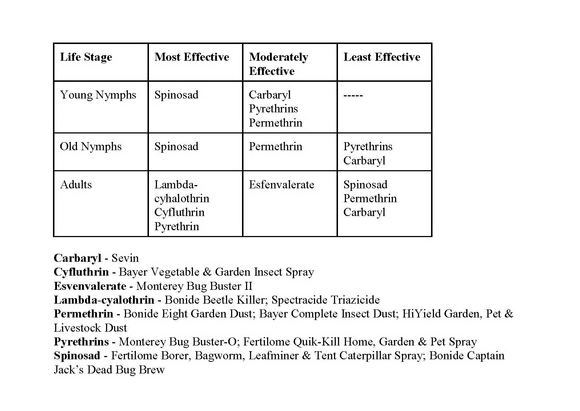
 RSS Feed
RSS Feed
